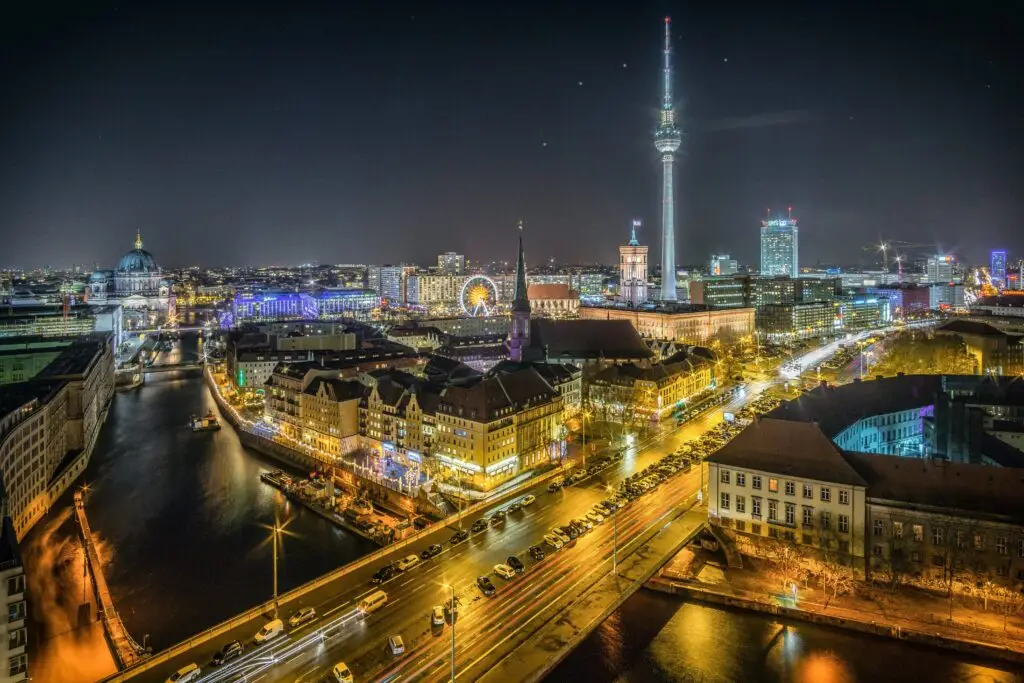
Table of Contents
Property Investment Opportunities in Emerging Areas in Berlin
Berlin’s property market is experiencing a period of dynamism, driven by the city’s evolving landscape and growing population. Investors are now casting their eyes beyond the traditional hotspots to the emerging areas that offer potential for growth and profits. Identifying where to invest demands an understanding of the local property trends and the socio-economic factors that drive the real estate market.
Emerging areas in Berlin present unique opportunities for property buyers and investors looking to capitalize on tomorrow’s prime locations. Aspects like upcoming infrastructure projects, changes in neighborhood demographics, and the presence of creative or tech industries can be strong indicators of a neighborhood’s growth trajectory. This foresighted approach to property investment has led to increased interest in neighborhoods that may have been overlooked in the past.
Key Takeaways
- Emerging neighborhoods in Berlin offer growth potential for property investors.
- Investment decisions should be informed by factors such as infrastructure and demographics.
- Foresight into market trends is crucial for identifying profitable real estate opportunities.
More articles on Berlin include:
Why buy property in Berlin: advantages and benefits
Emerging Property Markets in Berlin
Berlin’s property landscape continues to evolve, with certain districts emerging as particularly attractive investment opportunities due to their development potential and increasing demand.
Friedrichshain-Kreuzberg
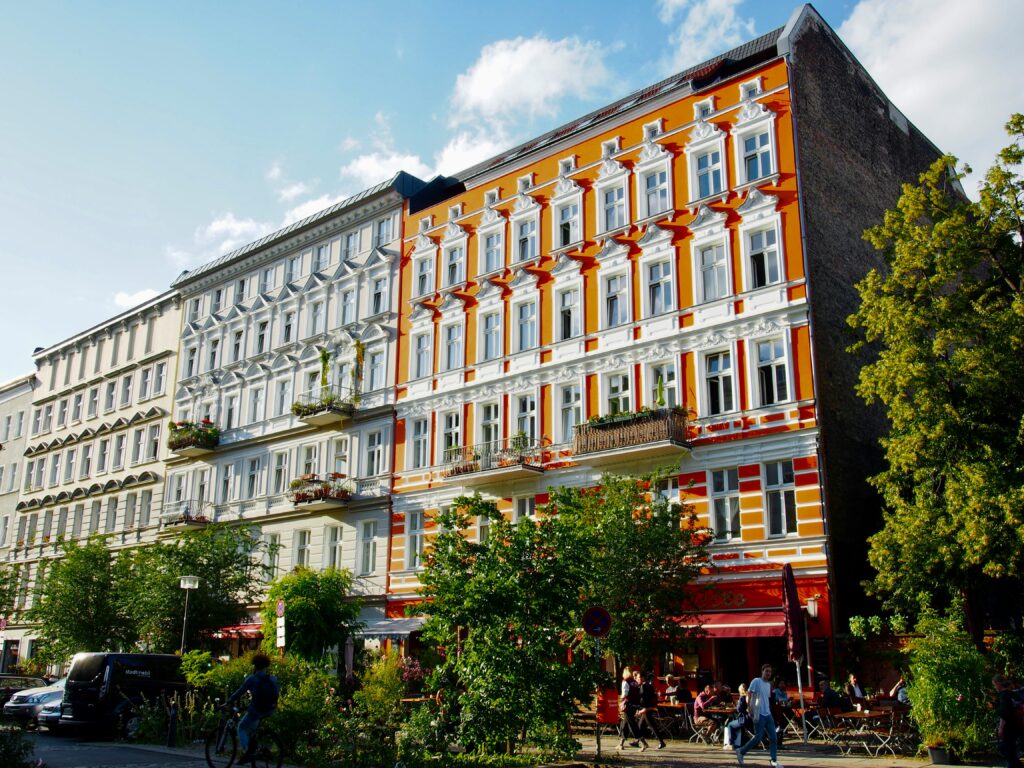
Friedrichshain-Kreuzberg is one of the most vibrant and diverse boroughs in Berlin, Germany, known for its youthful spirit, cultural diversity, and dynamic real estate market. The area is a blend of historical charm and modern urban living, with a mix of old, beautifully restored buildings and new developments.
Here’s an overview of the real estate market in Friedrichshain-Kreuzberg:
Market Characteristics:
– Demand: There is typically high demand for living space in Friedrichshain-Kreuzberg due to its popularity among young professionals, students, and creatives.
– Supply: The supply can be tight, with limited space for new developments. This can lead to higher prices and competition for available properties.
– Property Types: The borough offers a variety of property types, including old-style Altbau apartments, Plattenbau (prefabricated buildings from the GDR era), and new, modern apartments.
Price Trends:
– Rental Prices: Rental prices in Friedrichshain-Kreuzberg have been on the rise, reflecting the general trend in Berlin. However, rent control measures, such as the Mietendeckel (rent cap), have been introduced and contested in court, leading to some uncertainty.
– Purchase Prices: Purchase prices for both residential and commercial properties have seen significant increases over the past years, with the area being highly sought after by both domestic and international investors.
Infrastructure and Connectivity:
– The borough is well-connected with the rest of Berlin through an extensive public transportation network, including U-Bahn (subway), S-Bahn (suburban trains), buses, and trams.
– It also has good cycling infrastructure, which is a popular mode of transport among residents.
Investment Potential:
– The area is considered to have good investment potential due to its popularity and ongoing urban development projects. However, potential investors should be aware of the regulatory environment, which can include rent controls and restrictions on short-term rentals, which may impact the return on investment.
Development and Urban Projects:
– Friedrichshain-Kreuzberg has seen various development projects aimed at creating new residential and commercial spaces while preserving the character of the neighborhoods.
– Urban renewal projects are often focused on sustainability and improving the quality of life for residents.
Challenges and Considerations:
– Gentrification: Like many popular urban areas, Friedrichshain-Kreuzberg faces issues related to gentrification, where rising prices can displace long-term residents.
– Preservation of Character: There is a strong desire among residents and local authorities to preserve the unique character of the borough, which can sometimes conflict with development interests.
Future Outlook:
– Despite the challenges, the real estate market in Friedrichshain-Kreuzberg is expected to remain robust due to the area’s ongoing appeal. The unique blend of culture, history, and modern amenities continues to attract a diverse population.
Neukölln
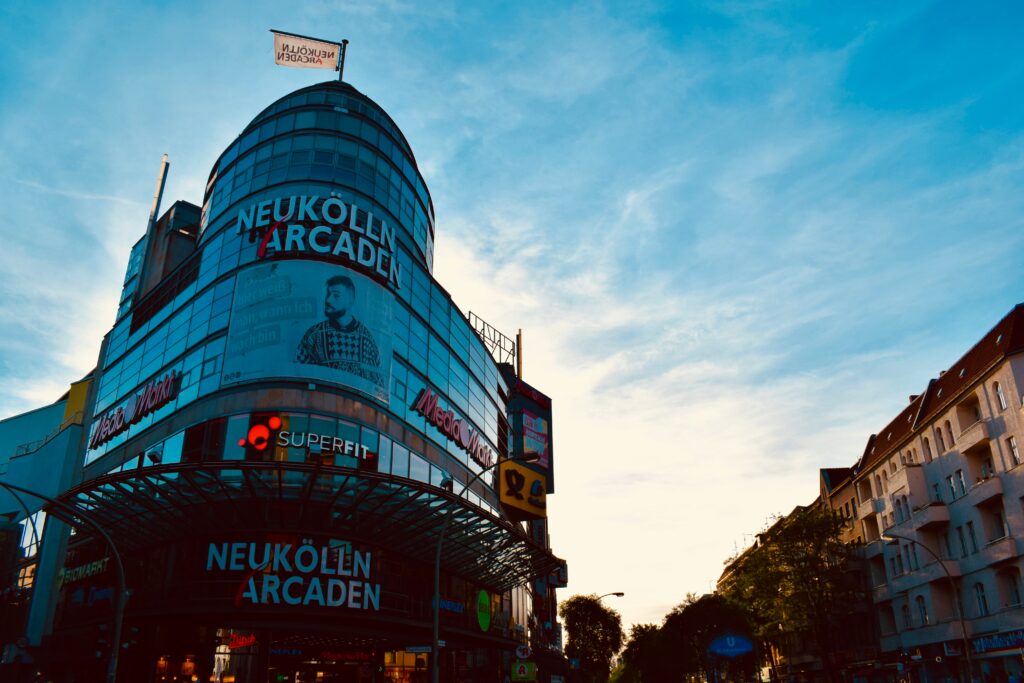
Neukölln is another borough of Berlin that has undergone significant change and development over the past few decades. Once known for its working-class roots and a diverse immigrant population, Neukölln has become increasingly popular among young people, students, artists, and expatriates, contributing to its vibrant and dynamic atmosphere.
In Neukölln, the property market is characterized by its variety of options, from turn-of-the-century apartments to contemporary residential projects. Investors are particularly interested in Neukölln due to its ongoing development and the increasing attractiveness of the neighborhood’s lifestyle.
Here is an overview of the real estate market in Neukölln:
Market Dynamics:
– The real estate market in Neukölln has seen a surge in popularity, leading to increased demand for housing. This demand has resulted in rising property prices and rents, though they may still be more affordable compared to other central boroughs like Mitte or Prenzlauer Berg.
Property Types:
– Neukölln offers a mix of old Berlin-style Altbau (pre-war) buildings with high ceilings and decorative details, post-war residential blocks, and some new developments. The Altbau apartments, in particular, are highly sought after for their character and charm.
Investment Potential:
– Investors have shown interest in Neukölln due to the potential for property value appreciation. The area’s ongoing gentrification and development projects make it an attractive option for long-term investments.
Gentrification Concerns:
– The influx of new residents and investors has brought about gentrification, which is a concern for existing residents. Rising rents and property prices can lead to the displacement of long-standing communities.
Rental Market:
– The rental market in Neukölln is competitive, with demand often outstripping supply. This has led to an increase in rental prices, although recent rent control measures have aimed to stabilize the market.
Infrastructure and Connectivity:
– The borough benefits from good public transportation links, including the U-Bahn, S-Bahn, and bus lines, which provide easy access to the rest of Berlin.
Future outlook:
– Neukölln’s real estate market offers a dynamic environment with a blend of traditional Berlin charm and a burgeoning contemporary culture. For investors and homebuyers, Neukölln presents both opportunities and challenges, with the potential for property value appreciation balanced by the need to navigate the borough’s regulatory landscape and the broader trends affecting Berlin’s housing market.
Lichtenberg
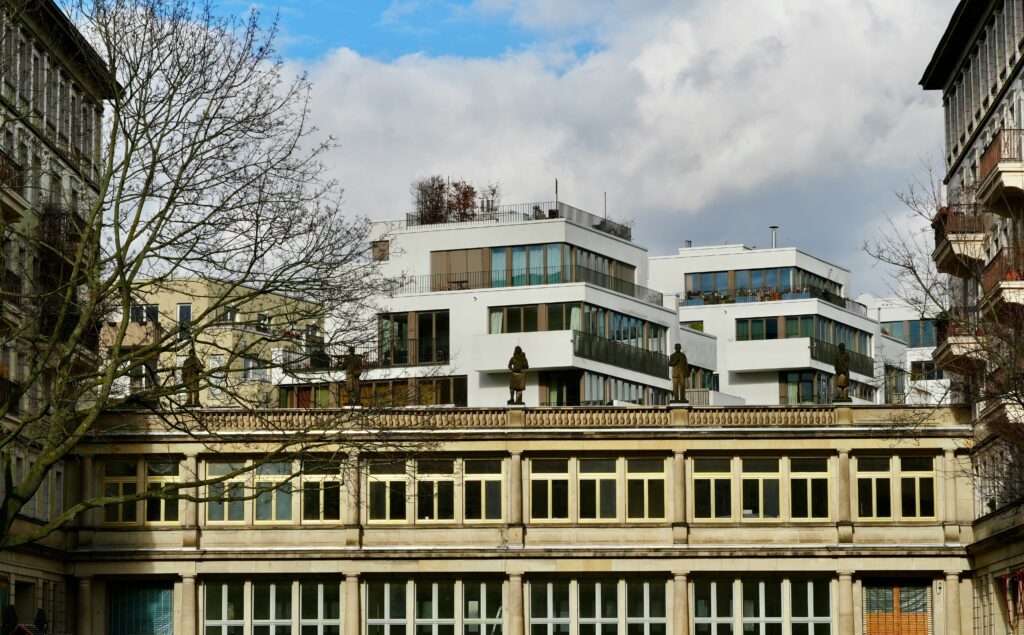
Lichtenberg is a borough located in the eastern part of Berlin, distinguished by its quiet residential neighborhoods and well-planned infrastructure. It offers a comparatively lower entry price point for property investments, which, combined with its steadily increasing desirability, makes it a solid choice for those looking to invest in a growing area.
Here’s an overview of the real estate market in Lichtenberg:
Market Dynamics:
– Lichtenberg’s real estate market has been characterized by steady growth, with increasing interest from both buyers and renters. The borough’s affordability compared to more central areas of Berlin makes it an attractive option for a variety of residents, including families, students, and professionals.
Property Types:
– The housing stock in Lichtenberg is diverse, with a range of property types including Plattenbau (prefabricated apartment buildings from the GDR era), Altbau (period buildings), and newer residential complexes. There are also single-family homes and townhouses, particularly in the quieter, more suburban parts of the borough.
Investment Potential:
– Investors have been attracted to Lichtenberg due to its lower entry prices and potential for growth. The borough’s ongoing development, including new residential projects and infrastructure improvements, suggests potential for property value appreciation.
Gentrification and Development:
– Parts of Lichtenberg are experiencing gentrification, with renovations and new developments leading to increased property values and rents. However, this process is not as pronounced as in other boroughs like Friedrichshain-Kreuzberg or Neukölln.
Rental Market:
– The rental market in Lichtenberg remains relatively affordable, but like the rest of Berlin, it has seen an upward trend in prices. The borough offers a range of rental options, from budget-friendly apartments to more upscale accommodations in newly developed areas.
Infrastructure and Connectivity:
– The borough is well-connected to the rest of Berlin via public transportation, including the U-Bahn, S-Bahn, tram, and bus lines. This connectivity makes it an attractive place for those who work in the city center but prefer a more affordable living area.
Future outlook:
– Lichtenberg’s real estate market presents a promising outlook for the future, particularly for those looking for more affordable investment opportunities within Berlin. The borough’s diverse housing stock, family-friendly reputation, and ongoing development projects contribute to its appeal as a location for both residential and commercial real estate investment.
Treptow-Köpenick
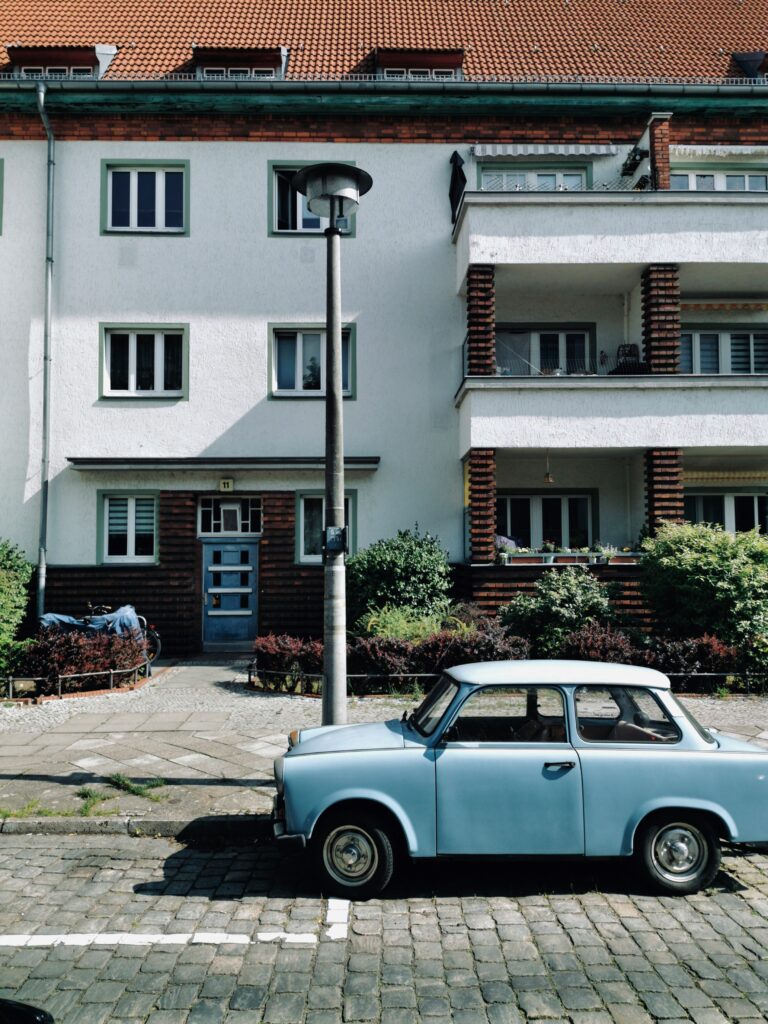
Treptow-Köpenick is the largest borough by area in Berlin, located in the southeast of the city. It is known for its extensive waterways, forests, and residential neighborhoods, offering a mix of urban living and natural landscapes. It has become an attractive spot for buyers seeking a balance between nature and urban living, with a property market that is both affordable and promising.
Here is an overview of the real estate market in Treptow-Köpenick:
Market Dynamics:
– The real estate market in Treptow-Köpenick has been gaining popularity, especially among those looking for a balance between city life and access to nature. This has led to a steady increase in both property prices and rental rates, although they generally remain more moderate compared to the city center.
Property Types:
– Treptow-Köpenick offers a wide range of housing options, from waterfront properties and single-family homes to modern condominiums and traditional Altbau apartments. The borough also has several attractive new development projects.
Investment Potential:
– The area is considered to have good investment potential due to its growing popularity, ongoing development, and relatively lower property prices compared to more central boroughs.
Quality of Life:
– With its numerous lakes, rivers, and the expansive Müggelwald forest, Treptow-Köpenick is particularly appealing for those who prioritize quality of life and outdoor activities. This natural setting, combined with good infrastructure and services, adds to the borough’s residential appeal.
Infrastructure and Connectivity:
– The borough is well-connected to the rest of Berlin through various public transportation options, including S-Bahn, regional trains, and buses. The completion of the BER airport in nearby Schönefeld also enhances the area’s connectivity.
Commercial and Industrial Development:
– Treptow-Köpenick has several established industrial areas and is seeing growth in the commercial sector, with new businesses and science parks adding to the local economy and job market.
Future outlook:
– The future outlook for real estate investments in Treptow-Köpenick is optimistic. The borough’s appeal is likely to increase as more people seek living spaces that offer both natural surroundings and urban conveniences. The growth in local commercial and industrial sectors is expected to contribute positively to the economy, potentially leading to increased demand for both residential and commercial real estate.
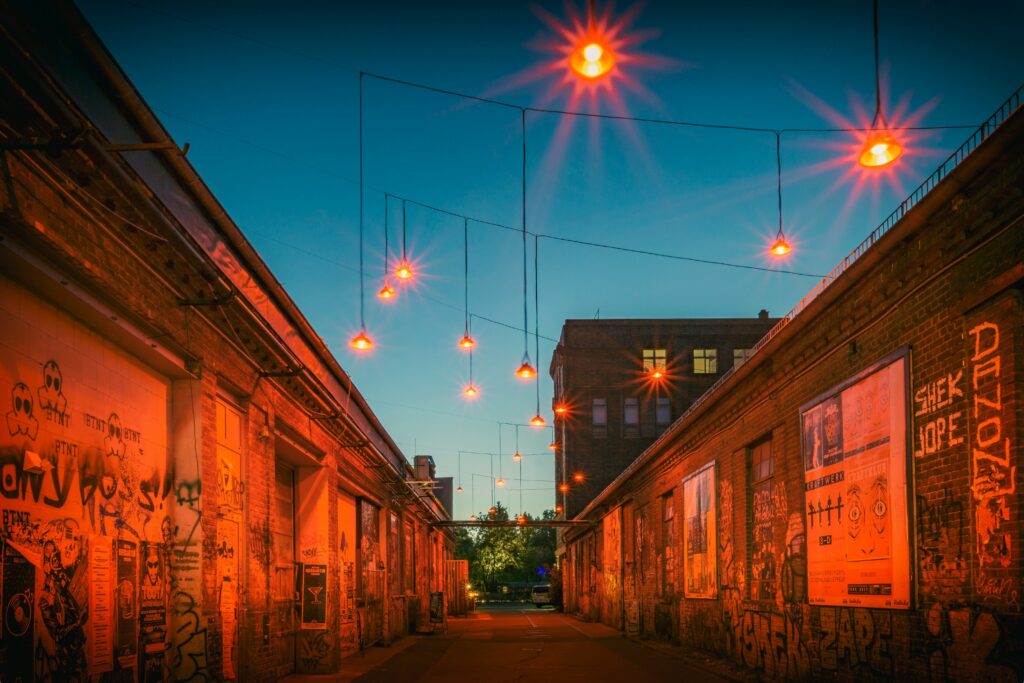
Factors Influencing Property Investment
When considering property investments in Berlin, examining current economic movements, infrastructure projects, and the cultural allure of the area is crucial for informed decision-making.
Economic Growth
Berlin’s economic landscape is experiencing a significant upswing, with technology and creative industries driving growth. Entrepreneurs find Berlin attractive for its entrepreneurial spirit and relatively low cost of doing business. This growth can increase property demand and values, suggesting promising prospects for investors in emerging areas.
Infrastructure Developments
The city is investing heavily in its infrastructure. For instance, areas like Berlin-Mitte are witnessing improvements with new furnished and serviced apartments near the Berlin Central Station, enhancing their desirability and potentially leading to an uptick in real estate investment.
Cultural and Lifestyle Appeal
Berlin is renowned for its vibrant cultural scene and lifestyle, attracting a diverse population. Emerging areas benefit from their proximity to cultural hotspots, parks, and lively neighborhoods, which bolsters property values and rental markets. The blend of modern amenities with historical charm makes these areas particularly enticing to investors.